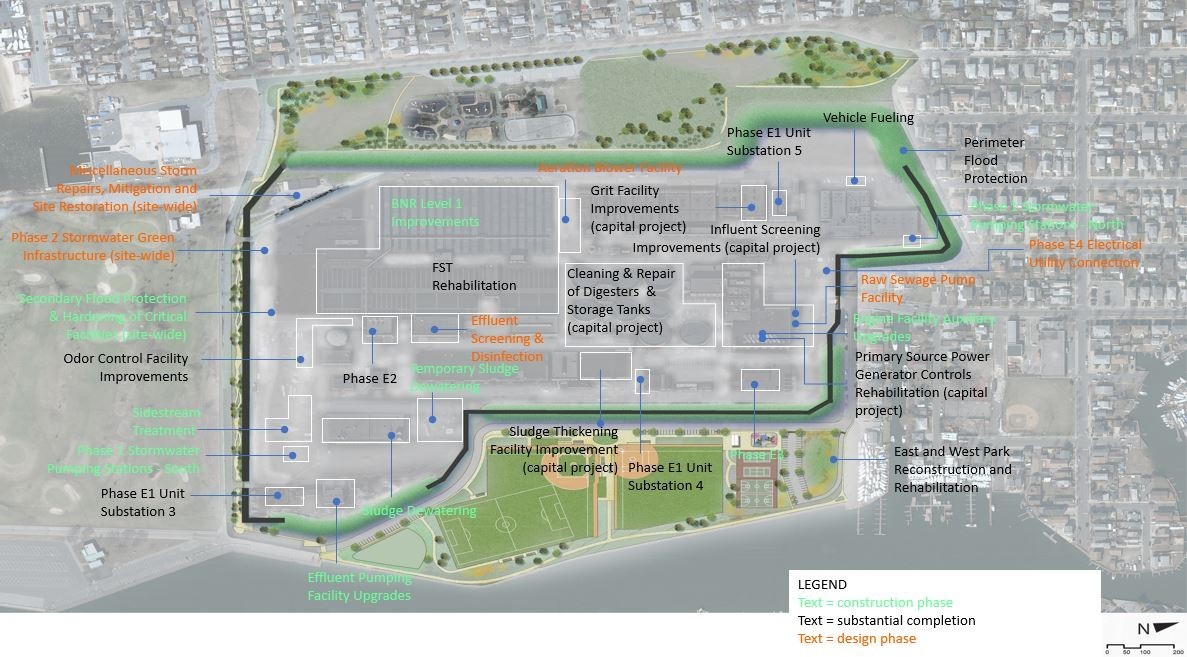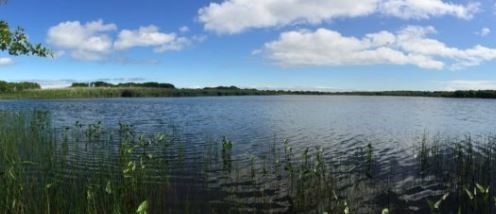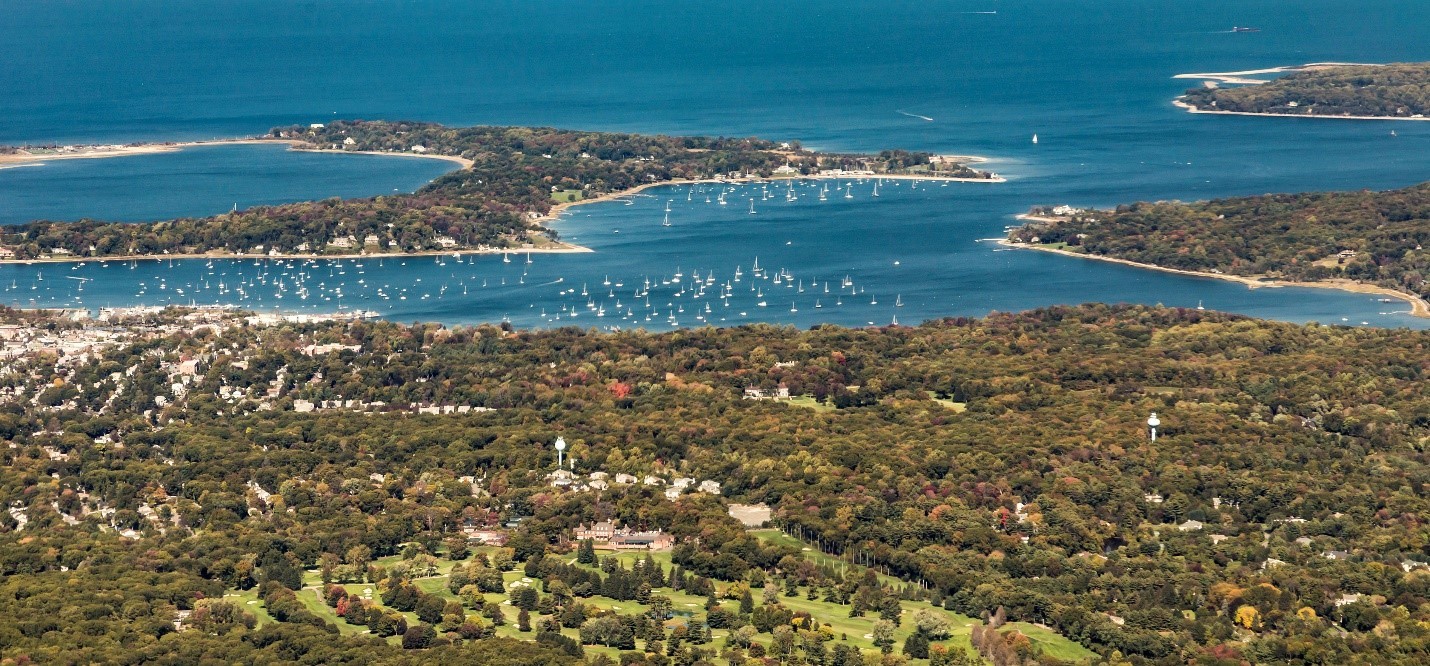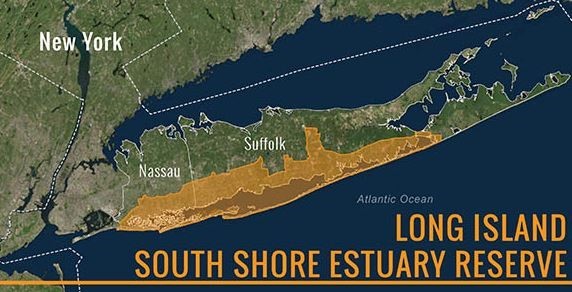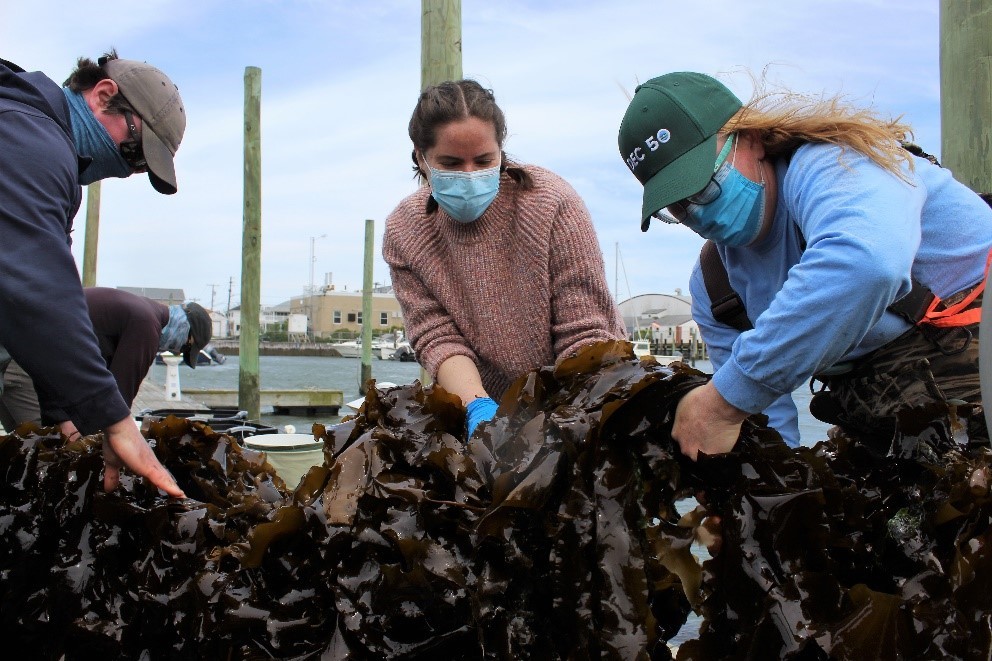Long Island Nitrogen Action Plan (LINAP) - Monthly Newsletter
The New York State Department of Environmental Conservation sent this bulletin on 12/23/2020 11:00 AM EST |
| DEC Delivers - Information to keep you connected and informed from the NYS Department of Environmental Conservation |
| Share or view as a web page || Update preferences or unsubscribe |
Long Island Nitrogen Action Plan (LINAP) - December NewsletterDespite the setbacks that 2020 delivered, LINAP partners remained vigilant and committed to advancing the goals set by the Long Island Nitrogen Action Plan. This month’s newsletter provides an overview of the great progress that was made during this unprecedented year:
|
Suffolk County2020 was a historic year for Suffolk County as many nitrogen reducing initiatives advanced significantly including: expansion of sewer systems through the county’s Coastal Resiliency Initiative, an exponential increase in the installations of Innovative and Alternative Onsite Wastewater Treatment Systems (I/A OWTS) through the County’s grant and loan program, and the completion of a feasibility study to establish a Countywide Wastewater Management District. But most notable this year was the release of the Subwatershed Wastewater Plan (SWP); a rigorous, science-based roadmap for shifting away from reliance on conventional cesspools and septic systems. The SWP is the product of years of research, documentation, modeling, and evaluation of the County’s water resources and provides a roadmap on how to address the nitrogen crisis through wastewater upgrades and other nitrogen pollution mitigation strategies. The plan seeks to arrest and reverse the existing trend of degrading water quality and has also been approved as a Nine Element Watershed Plan by New York State Department of Environmental Conservation, opening the door for potential future funding opportunities. In October, a bill was signed into law which modifies the county’s Sanitary Code to require the use of nitrogen-reducing wastewater technologies in unsewered areas for all new construction and allows greater flexibility for the use of small sewer plants in downtown business districts. The code amendments are the first policy changes to be advanced based on recommendations in the Subwatersheds Wastewater Plan. More information on Suffolk County's LINAP initiatives can be found in LINAP's April 2020 newsletter.
Photo Credit: Suffolk County Nassau CountyNassau County achieved numerous accomplishments this year as it continues its steadfast commitment to reducing nitrogen pollution and improving water quality. Earlier this year the County released Nitrogen Loading Modeling for Nassau County Subwatersheds, a report that estimates the amount of nitrogen from on-site septic systems, sewage treatment plants, fertilizer, and atmospheric deposition in the county’s subwatersheds. The findings from this study will help determine how much nitrogen will need to be removed to achieve water quality goals and guide nitrogen load reduction strategies. In 2021, the County will work with Stonybrook University to prepare a 9 Element Plan Watershed Plan for the county. Nassau County also saw incredible progress with reconstruction and resiliency upgrades to the South Shore Water Reclamation Facility (SSWRF) formerly known as the Bay Park Sewage Treatment Plant. These upgrades include storm protection and projects designed to reduce the nitrogen concentration in wastewater effluent discharged from the facility. Additionally, the Long Beach Water Pollution Control Plant (WPCP) Consolidation Project involves the conversion of the Long Beach WPCP to a pump station which would reroute Long Beach sewage – up to 5 million gallons per day – to the newly upgraded SSWRF where it will be treated. This project along with the Bay Park Conveyance Project, which will convey treated effluent from SWRF to the ocean outfall at the Cedar Creek WPCP, would remove a total of approximately 55 million gallons per day of treated wastewater effluent from the Western Bays. The County will also be conducting a sewer expansion feasibility study in Point Lookout--one of the few areas on the county’s south shore that remains unsewered. And last but certainly not least the County just recently launched a grant and loan program for the purchase and installation of I/A OWTS in high priority areas throughout the County. More information about Nassau County can be found in LINAP’s May 2020 newsletter.
Photo Credit: Nassau County Peconic Estuary Partnership (PEP)Nitrogen Management is a critical part of the Peconic Estuary Partnership's strategy to protect and restore water quality in the Peconic Estuary. The largest accomplishment for PEP in 2020 occurred this past October, when the revised Comprehensive Conservation and Management Plan (CCMP) was released. The CCMP is a blueprint for protecting and restoring the Peconic Bays and will carry the PEP forward through the next ten years. PEP also made significant progress on many nitrogen focused projects such as the Solute Transport Model with USGS, which will estimate time-varying nitrogen loading rates to the Peconic Estuary, and the Nitrogen Assessment Project to assess the cost, per pound, of nitrogen removal for various nitrogen reduction best management practices currently being employed throughout the country. The Homeowner Rewards Program, which provides Peconic watershed residents the chance to apply and be reimbursed for installing rain gardens, native plant gardens and rain barrels on their properties, continues to operate successfully and new projects taken on this year included work on a pilot project to create a living shoreline at the Suffolk County Marine Environmental Learning Center and a rain garden project at Havens Beach in Sag Harbor. Read more information about PEP in LINAP’s October 2020 newsletter.
Photo Credit: Peconic Estuary Partnership Long Island Sound Study (LISS)2020 marked the 35th anniversary of the Long Island Sound Study and the year that it had the largest budget in history! The increased federal support has allowed many water quality programs and projects to move forward. Recently members of the LISS Management Committee decided to establish a working group to help focus on Sustainable and Resilient Communities. The work group was formed and drafted a 5-year plan to guide investments to support local government efforts to be both resilient and sustainable. Additionally, the New York City Department of Environmental Protection (NYCDEP) recently entered into a contract with HDR, an engineering and environmental science firm, to update the System Wide Eutrophication Model (SWEM). This new generation of models will better describe dissolved oxygen concentration, as well as address new challenges such as warming temperatures, increasing precipitation and more development. The models will allow researchers to forecast how the Sound may respond to changes in human (e.g., pollution) and natural (e.g., weather) drivers that impact the system. The model will also enable managers to evaluate potential impacts of point source discharges, nonpoint source discharges, and sediment fluxes on water quality. Once complete, LISS will make the model available for use by stakeholders. The Long Island Sound Study also approved funds in the 2020 budget to develop a time-varying solute-transport model for Long Island. This project will dovetail with the PEP Solute Transport Model mentioned above. Once complete the model will cover Long Island in its entirety. This model will aid in providing a more realistic depiction of nitrogen loading through time and allow for the legacy nitrogen in the aquifers to be accounted for. The model will be available for use by stakeholders. Read more information about the LISS in LINAP’s September 2020 newsletter.
Photo Credit: Long Island Sound Study South Shore Estuary Reserve (SSER)This past year, the NYSDOS South Shore Estuary Reserve Office along with local stakeholders and with the support of the NYSDOS Office of Planning, Development and Community Infrastructure completed an interactive story on shellfish in the SSER. The shellfish story highlights the importance of shellfish to the region and includes information on the benefits and history of shellfish in the estuary, as well as issues affecting their survival and restoration efforts underway. Additionally, the data from the 2018 South Shore Estuary Reserve Benthic Habitat Mapping Survey was recently uploaded to the NYSDOS Geographic Information Gateway. The new information illustrates changes in benthic habitat, such as eelgrass, macroalgae, and emergent tidal wetlands within the SSER. To access the new data on the Geographic Information Gateway, search “SAV” in the search box on the Gateway homepage. The dataset is titled “2018 SSER SAV Data Set Biotic.” For more information on the SSER read LINAP’s June 2020 newsletter.
Photo Credit: South Shore Estuary Reserve Center for Clean Water Technology (CCWT)The Center for Clean Water Technology (CCWT) continues to develop non-proprietary, onsite wastewater treatment systems for residential and commercial use that reduce nitrogen. The CCWT currently has three variations of Nitrogen Removing Biofilters (NRBs) adaptable to site constraints, depth to groundwater, and degree of desired nitrogen removal. CCWT has installed 11 NRBs across Suffolk County and has moved from the experimental pilot phase for the unlined type of NRB according to Article 19 of the Suffolk County Sanitary Code. CCWT is in various project stages for installation of an additional 6 NRBs in 2021. Additionally, the U.S. Indian Health Services installed 3 NRBs in 2020 at the Shinnecock Nation in Southampton, and more are scheduled in 2021. CCWT has received provisional patents for two of three unique NRBs designed to decrease the footprint and therefore, the cost of the first generation NRBs. A full-scale pre-cast concrete prototype, named FlexTreatTM, is now in fabrication by Roman Stone Construction in Bayshore. The prototype is scheduled for installation in early 2021 at the Center's Wastewater Research and Innovation Facility, which uses domestic wastewater from a Suffolk County Sewer District. To learn more about CCWT read the LINAP February 2020 newsletter.
Photo Credit: Center for Clean Water Technology Long Island Regional Planning Council (LIRPC)This past year the LIRPC continued its commitment to advancing the goals of LINAP by extending the Hempstead Bay Water Quality Monitoring Program for an additional year. The program provides a framework for monitoring, analysis, and reporting of water quality within the surface waters of the Western Bays. The LIRPC also recently launched the 2nd annual Long Island Water Quality Challenge to promote project-based learning in Science, Technology, Engineering, Arts and Mathematics (STEAM). The program will help students develop a greater understanding of how to protect Long Island’s crucial water resources – with a specific focus on nitrogen pollution. The STEAM challenge is perfect for students working collaboratively in-person or remotely, enabling anyone to participate despite the pandemic. Additionally, the LIRPC has been hard at work on the Long Island Water Quality Information Data System (LIQWIDS), designed to serve as a centralized, public facing water quality data portal to allow interested stakeholders to share water quality monitoring data on Long Island. Visit LIRPC's webpage for more information on all LIRPC LINAP activities.
Photo Credit: LIRPC Department of Environmental Conservation (DEC)DEC has continued to work with LINAP partners on their initiatives while also continuing to advance several projects that support LINAP’s goals including: water reuse, bioextraction, shellfish restoration and the development of Nitrogen Smart Communities. The DEC has been working behind the scenes to advance the water reuse initiative to capitalize on the nitrogen contained in wastewater effluent for beneficial use after advancing other workgroup priorities such as the Water Reuse Permitting Roadmap and a Water Reuse Opportunities Interactive Map for golf courses. The Nutrient Bioextraction Initiative is working on improving the quality of marine waters in New York and Connecticut by removing excess nitrogen through the cultivation and harvest of seaweed and shellfish. There are pilot studies to better understand how growing sugar kelp or ribbed mussels in the waters around Long Island would improve water quality. This initiative is a partnership with the Long Island Sound Study, New England interstate Pollution Control Commission and DEC. The DEC has also made significant progress this year in the development of Nitrogen Smart Communities (NSC), a voluntary program that will assist municipalities in Nassau and Suffolk counties identify the main sources of nitrogen within their municipality and take meaningful and effective actions to reduce, prevent or eliminate nitrogen pollution. This program will go through a pilot phase before it is rolled out island-wide. Visit DEC's LINAP webpage for more information on all LINAP activities.
Photo Credit: NYSDEC To sign up for the LINAP Newsletter, visit the LINAP webpage or click here. |


